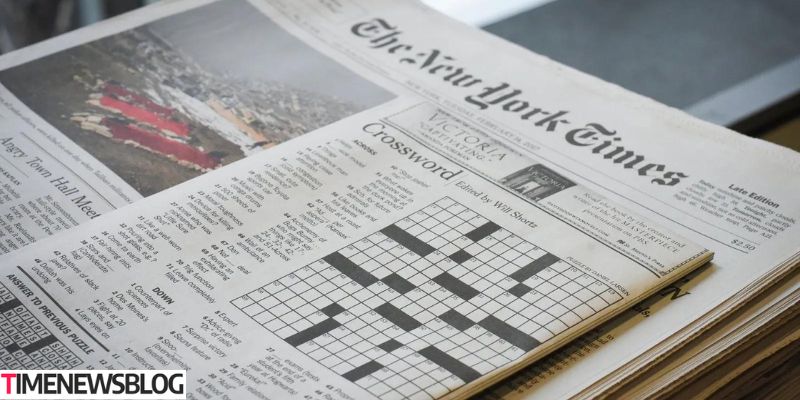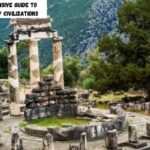Crossword puzzles have long been a source of entertainment, mental exercise, and a beloved pastime for millions around the world. From casual solvers to seasoned experts, the allure of filling in those empty squares with the correct letters transcends generations. Among the myriad of crossword puzzles available, the New York Times (NYT) crossword stands out as one of the most respected and challenging. Its clever clues and diverse themes offer a perfect blend of challenge and satisfaction, keeping solvers engaged day after day.
One such clue that has piqued the curiosity of many solvers is “Put on the wall as a poster.” This seemingly straightforward hint has stumped even the most experienced crossword enthusiasts, prompting a deeper look into its possible answers and the art of decoding crossword clues.
Understanding Crossword Clues: The Art of Puzzle-Solving
Crossword clues are more than mere hints; they are cleverly crafted pieces of a larger puzzle that require both logic and creativity to solve. Understanding these clues is key to successfully completing a crossword puzzle, especially one as prestigious as the New York Times crossword.
Crossword clues can vary in complexity, ranging from simple definitions to intricate wordplay that requires lateral thinking. A well-designed clue provides just enough information to guide the solver without giving away the answer too easily. This delicate balance is what makes solving crosswords both challenging and rewarding.
Take, for example, the clue “Put on the wall as a poster.” At first glance, this clue appears to be straightforward, but it can have multiple interpretations. The solver must consider various possibilities and synonyms that could fit both the clue and the crossword grid. This process of elimination and deduction is the essence of crossword solving.
Common Answers for “Put on the Wall as a Poster”: A Deep Dive
When faced with the clue “Put on the wall as a poster,” several possible answers may come to mind. Each of these answers represents a different approach to interpreting the clue, and understanding these nuances can make all the difference in solving the puzzle.
POST
The most straightforward and commonly accepted answer is “POST.” In this context, “post” refers to the act of affixing something, like a poster, to a wall. It’s a simple, concise answer that fits well within the typical parameters of a crossword puzzle. The word “post” is also frequently used in everyday language, making it a familiar choice for solvers.
However, the simplicity of this answer is precisely what makes it so effective. Crossword puzzles often rely on double meanings and wordplay, and “post” can also refer to online posting or a mail post, adding a layer of complexity to the clue.
HANG
Another plausible answer is “HANG.” This word is slightly more specific than “post,” as it directly describes the action of placing something, such as a poster, on a wall. “Hang” is a common term used to describe the process of putting up pictures, posters, or other decorative items, making it a fitting choice for this clue.
The use of “hang” in crossword puzzles is not uncommon, and it often appears in clues related to wall art or decorations. This makes it a viable option for the clue in question, especially if the crossword grid requires a word with this number of letters.
TACK
For those looking for a more literal interpretation, “TACK” might be the answer. This word refers to the act of pinning or thumbtacking a poster to a wall. While “tack” is less commonly used than “post” or “hang,” it is still a valid answer that crossword solvers may encounter.
The specificity of “tack” makes it an interesting choice for the clue. It conveys a precise method of affixing something to a wall, which can be particularly useful in puzzles where the surrounding letters limit the possible answers.
MOUNT
Another word that fits the clue is “MOUNT.” This term is often associated with more permanent displays, such as mounting a framed picture or artwork on a wall. While “mount” might be considered a more formal or technical term, it still aligns with the idea of putting something on a wall.
In the context of a crossword puzzle, “mount” can be a slightly more challenging answer, as it is not as commonly used in everyday language. However, its precise meaning makes it a strong contender for solving the clue.
Tips for Solving Crossword Clues: Strategies for Success
Solving crossword puzzles, especially those as challenging as the New York Times crossword, requires a combination of strategy, patience, and creativity. Here are some expert tips to help you decode clues like “Put on the wall as a poster” and improve your overall crossword-solving skills.
Context is Key
One of the most important strategies in solving crossword puzzles is to consider the context of the clue. The theme of the puzzle and the surrounding clues can often provide valuable hints about the types of words you should be looking for. For example, if the puzzle has a theme related to art or home décor, the clue “Put on the wall as a poster” might lead you to think of words related to hanging or displaying artwork.
Additionally, paying attention to the tone and style of the crossword can offer insights into the type of language and references the puzzle creator is using. This contextual awareness can guide you toward the correct answer.
Think Synonyms
Crossword clues often have multiple potential answers, especially when the clue is as versatile as “Put on the wall as a poster.” To increase your chances of finding the right answer, think about all possible synonyms that fit both the clue and the number of letters required. Words like “post,” “hang,” “tack,” and “mount” are all synonyms that could be correct, depending on the specific puzzle.
Expanding your mental thesaurus is crucial in crossword solving. The more synonyms you can think of, the better equipped you’ll be to tackle a variety of clues. This approach also helps in understanding the puzzle creator’s mindset and the potential wordplay involved.
Consider Wordplay
Many crossword clues involve wordplay, where the answer might be a pun, a homophone, or a word with multiple meanings. In the case of the clue “Put on the wall as a poster,” the word “post” is a great example of wordplay, as it can refer to both affixing something to a wall and to making a public announcement or online post.
To successfully solve clues that involve wordplay, it’s important to keep an open mind and consider different interpretations of the words in the clue. Don’t just think about the most obvious meaning; explore alternative definitions and usages that might fit the puzzle’s theme.
Check Crossings
One of the most effective strategies for narrowing down your options is to use the intersecting letters from other answers. Crossword puzzles are designed so that the answers intersect, providing you with additional hints that can help confirm or eliminate potential answers.
For example, if you’re stuck between “hang” and “post” for the clue “Put on the wall as a poster,” the letters from the crossing answers can help you determine which one is correct. This technique is particularly useful when you’re dealing with multiple possible answers or when the clue is ambiguous.
Stay Updated
The New York Times crossword, like many others, often incorporates contemporary language, references to current events, and popular culture. Staying updated with recent trends, news, and cultural phenomena can give you an edge in solving these puzzles.
For instance, if a clue references a recent event or a trending topic, having that knowledge fresh in your mind can make the difference between getting stuck and successfully filling in the answer. Engaging with a variety of media, including news, entertainment, and literature, can keep your crossword-solving skills sharp and relevant.
Why Crossword Puzzles Are Beneficial: Cognitive and Emotional Rewards
Engaging with crossword puzzles, especially those from the New York Times, offers numerous benefits that go beyond mere entertainment. These puzzles provide a range of cognitive and emotional rewards, making them a valuable activity for people of all ages.
Enhanced Vocabulary
One of the most obvious benefits of solving crossword puzzles is the enhancement of vocabulary. Regularly engaging with crosswords introduces you to new words, phrases, and language structures. The need to think of synonyms, understand wordplay, and decode complex clues naturally expands your lexicon.
Over time, this vocabulary enrichment translates into better communication skills, both in writing and in conversation. Crossword solvers often find themselves using words they’ve learned from puzzles in their daily lives, enhancing their ability to articulate ideas clearly and effectively.
Improved Memory
Crossword puzzles stimulate the brain and help improve memory function. The act of recalling words, definitions, and synonyms from your mental repository exercises your memory muscles, keeping them strong and agile.
Studies have shown that activities like crossword puzzles can help delay cognitive decline and improve memory retention in older adults. The regular practice of solving puzzles serves as a mental workout that keeps the brain active and engaged.
Mental Agility
The problem-solving nature of crosswords requires quick thinking and adaptability. Solving a crossword involves analyzing clues, considering multiple possibilities, and making connections between seemingly unrelated ideas. This mental agility is not only beneficial for puzzle-solving but also for critical thinking and creative problem-solving in everyday life.
Crossword solvers often develop a sharper mind, able to approach problems from different angles and think outside the box. This skill is transferable to various aspects of life, from professional challenges to personal decisions.
Stress Relief
For many, crossword puzzles are a relaxing and enjoyable way to unwind. The focus required to solve a puzzle provides a distraction from daily stressors, offering a mental escape that can be both soothing and rewarding.
The meditative quality of crossword solving, combined with the satisfaction of completing a puzzle, creates a sense of calm and relaxation. Many people find that engaging in a crossword puzzle at the end of a long day helps them decompress and prepares them for a restful night’s sleep.
Sense of Accomplishment
Completing a challenging crossword puzzle provides a strong sense of achievement and satisfaction. The process of working through difficult clues, overcoming obstacles, and finally filling in the last square is immensely rewarding.
This sense of accomplishment boosts confidence and encourages a positive mindset. It reinforces the idea that persistence and effort lead to success, a valuable lesson that can be applied to all areas of life.
Conclusion: Embracing the Challenge of Crossword Puzzles
The New York Times crossword’s clue “put on the wall as a poster nyt” is a perfect example of the creativity and challenge that make crossword puzzles so engaging. Whether the solution is “post,” “hang,” “tack,” or “mount,” the true joy of solving crosswords lies in the journey of interpretation and discovery.
By applying strategies like understanding context, thinking in synonyms, considering wordplay, checking crossings, and staying updated, you can improve your crossword-solving skills and enjoy the many cognitive and emotional benefits that come with it.
So, the next time you come across a challenging clue in your crossword puzzle, approach it with confidence and curiosity. Embrace the challenge, and enjoy the satisfaction that comes with solving it. Cheers to the fascinating world of crossword puzzles and the endless puzzles yet to be solved!
FAQ’ s
What makes the New York Times crossword puzzle so popular?
- The New York Times crossword puzzle is renowned for its challenging clues, diverse themes, and clever wordplay. It attracts solvers from all levels, from beginners to experts, and is considered a benchmark for high-quality puzzles.
2. How do I improve my crossword-solving skills?
- To improve your skills, focus on expanding your vocabulary, practicing regularly, and familiarizing yourself with common crossword themes and clues. Paying attention to the context of the puzzle and using strategies like checking crossings can also be very helpful.
3. What are some common strategies for solving difficult crossword clues?
- Common strategies include thinking of synonyms, considering wordplay or puns, and using the letters from intersecting answers to narrow down possibilities. Understanding the theme of the puzzle can also provide valuable hints.
4. Are there benefits to solving crossword puzzles regularly?
- Yes, solving crossword puzzles regularly can enhance your vocabulary, improve memory, increase mental agility, and provide stress relief. It’s also a great way to achieve a sense of accomplishment and keep your mind sharp.
5. What should I do if I’m stuck on a crossword clue?
- If you’re stuck on a clue, try thinking about synonyms, reread the clue to catch any wordplay, and look at the intersecting answers for additional hints. Sometimes, taking a break and returning with fresh eyes can also help.








